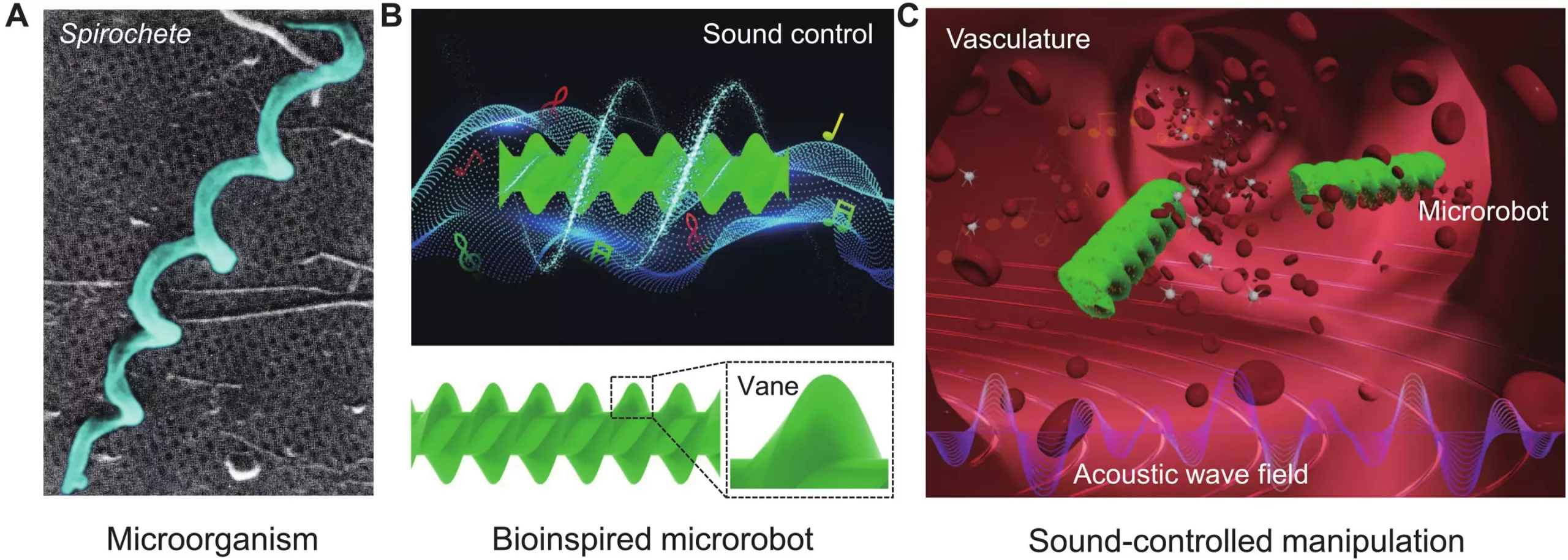The field of medical research has long been seeking methods to effectively target drug delivery within the human body, thereby minimizing side effects. To address this challenge, a team of robotic and acoustic engineers from prestigious institutions such as ETH Zurich and Westfälische Wilhelms-Universität Münster have devised a groundbreaking concept using sound waves to propel tiny microrobots through narrow tubes. Their experimental work, documented in a paper published in the journal Science Advances, introduces a unique approach that may revolutionize drug delivery systems.
Previous efforts to develop targeted drug delivery systems have centered around remote-controlled magnets. While magnet-based systems have shown promise, they still exhibit limitations and require further refinements for precision control. The team of researchers, therefore, sought an innovative solution that could potentially outperform existing methods.
The core principle behind this novel microrobot revolves around the concept of exploiting sound waves to propel a motorless robot through fluids. To achieve this, the scientists employed 3D printing technology to create a corkscrew-shaped structure using non-toxic polymer. This corkscrew was then placed within a glass tube filled with liquid. By directing sound waves towards the corkscrew, the molecules in the liquid were set into vibration, creating a vortex that propelled the robot forward.
A significant advantage of this system is its ability to control the speed and direction of the microrobot. By altering features of the sound waves, such as frequency, the researchers successfully manipulated the robot’s velocity within the tube. Intriguingly, the team found that increasing the sound wave frequencies enabled the robot to move upwards through a tube inclined at a 45-degree angle. This discovery holds immense potential for navigating complex anatomical structures in the body.
As the research team continues to explore this groundbreaking technology, future experiments will involve testing the microrobot within more flexible tubes, simulating the conditions of human blood vessels. This advancement would provide a more accurate representation of the microrobot’s performance and maneuverability in physiological environments.
Furthermore, the researchers are actively developing an acoustic helmet to augment their control over the microrobot. This innovative accessory could potentially offer enhanced precision and maneuvering capabilities, leading to even greater advancements in targeted drug delivery systems.
The team of robotic and acoustic engineers from ETH Zurich and Westfälische Wilhelms-Universität Münster has unveiled a groundbreaking technique that harnesses sound waves to propel microrobots through narrow tubes. This innovative approach opens up new possibilities for targeted drug delivery within the human body, overcoming some of the limitations associated with magnet-based systems. As this research continues to progress, the potential impact on medical treatments could be substantial, improving patient outcomes and revolutionizing the field of drug delivery.



Leave a Reply